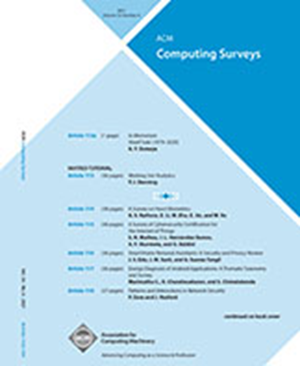A Survey of Event Causality Identification: Taxonomy, Challenges, Assessment, and Prospects
IF 28
1区 计算机科学
Q1 COMPUTER SCIENCE, THEORY & METHODS
引用次数: 0
Abstract
Event Causality Identification (ECI) has become an essential task in Natural Language Processing (NLP), focused on automatically detecting causal relationships between events within texts. This comprehensive survey systematically investigates fundamental concepts and models, developing a systematic taxonomy and critically evaluating diverse models. We begin by defining core concepts, formalizing the ECI problem, and outlining standard evaluation protocols. Our classification framework divides ECI models into two primary tasks: Sentence-level Event Causality Identification (SECI) and Document-level Event Causality Identification (DECI). For SECI, we review models employing feature pattern-based matching, machine learning classifiers, deep semantic encoding, prompt-based fine-tuning, and causal knowledge pre-training, alongside data augmentation strategies. For DECI, we focus on approaches utilizing deep semantic encoding, event graph reasoning, and prompt-based fine-tuning. Special attention is given to recent advancements in multi-lingual and cross-lingual ECI, as well as zero-shot ECI leveraging Large Language Models (LLMs). We analyze the strengths, limitations, and unresolved challenges associated with each approach. Extensive quantitative evaluations are conducted on four benchmark datasets to rigorously assess the performance of various ECI models. We conclude by discussing future research directions and highlighting opportunities to advance the field further.事件因果关系鉴定综述:分类、挑战、评估和展望
事件因果关系识别(Event Causality Identification, ECI)是自然语言处理(Natural Language Processing, NLP)中的一项重要任务,其重点是自动检测文本中事件之间的因果关系。这个全面的调查系统地调查了基本概念和模型,开发了一个系统的分类法和批判性地评估不同的模型。我们首先定义核心概念,形式化ECI问题,并概述标准评估协议。我们的分类框架将ECI模型分为两个主要任务:句子级事件因果关系识别(SECI)和文档级事件因果关系识别(DECI)。对于SECI,我们回顾了采用基于特征模式的匹配、机器学习分类器、深度语义编码、基于提示的微调和因果知识预训练以及数据增强策略的模型。对于DECI,我们专注于利用深度语义编码、事件图推理和基于提示的微调的方法。特别关注多语言和跨语言ECI的最新进展,以及利用大型语言模型(llm)的零射击ECI。我们分析了每种方法的优势、局限性和未解决的挑战。对四个基准数据集进行了广泛的定量评估,以严格评估各种ECI模型的性能。最后,我们讨论了未来的研究方向,并强调了进一步推进该领域的机会。
本文章由计算机程序翻译,如有差异,请以英文原文为准。
求助全文
约1分钟内获得全文
求助全文
来源期刊

ACM Computing Surveys
工程技术-计算机:理论方法
CiteScore
33.20
自引率
0.60%
发文量
372
审稿时长
12 months
期刊介绍:
ACM Computing Surveys is an academic journal that focuses on publishing surveys and tutorials on various areas of computing research and practice. The journal aims to provide comprehensive and easily understandable articles that guide readers through the literature and help them understand topics outside their specialties. In terms of impact, CSUR has a high reputation with a 2022 Impact Factor of 16.6. It is ranked 3rd out of 111 journals in the field of Computer Science Theory & Methods.
ACM Computing Surveys is indexed and abstracted in various services, including AI2 Semantic Scholar, Baidu, Clarivate/ISI: JCR, CNKI, DeepDyve, DTU, EBSCO: EDS/HOST, and IET Inspec, among others.
 求助内容:
求助内容: 应助结果提醒方式:
应助结果提醒方式:


